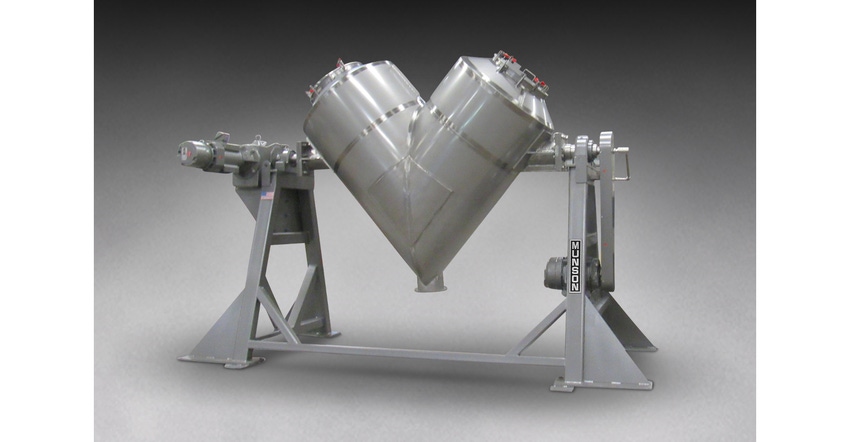Sanitary Vee-Cone Blender is Equipped for Liquid Additions
Unit blends dry and granular bulk materials uniformly, with or without liquid additions, typically in 15 to 30 minutes.

The new Munson Model VB-60-SSIS sanitary vee-cone blender with internal spray line blends dry and granular bulk materials uniformly, with or without liquid additions, typically in 15 to 30 minutes.
Constructed of #304 stainless steel finished to sanitary standards, the 60-cu-ft-capacity chamber features smooth internal surfaces, allowing unobstructed material flow during blending and total evacuation through a gate valve upon discharge.
The absence of residual material, together with interior access through two quick-release covers, allows rapid sanitizing and visual inspection of all material contact surfaces.
The independently-powered spray line/intensifier bar positioned within the inclined cylinders can distribute liquids throughout the batch thoroughly and rapidly, and/or impart shear to break down soft agglomerates, achieving uniform blends at fill volumes from 100% to 50% of rated capacity with equal efficiency, depending on material.
Driven by a 7.5-hp motor and mounted on a rigid steel frame, the cylinders rotate on pillow block bearings at 11 rpm with a swing radius of 56 in.
Other models are offered in capacities from 8 quarts to more than 200 cu ft, to USDA, pharmaceutical, and other sanitary or industrial standards.
Munson Machinery Company, Inc., Utica, NY 800-944-6644 www.munsonmachinery.com
About the Author(s)
You May Also Like




